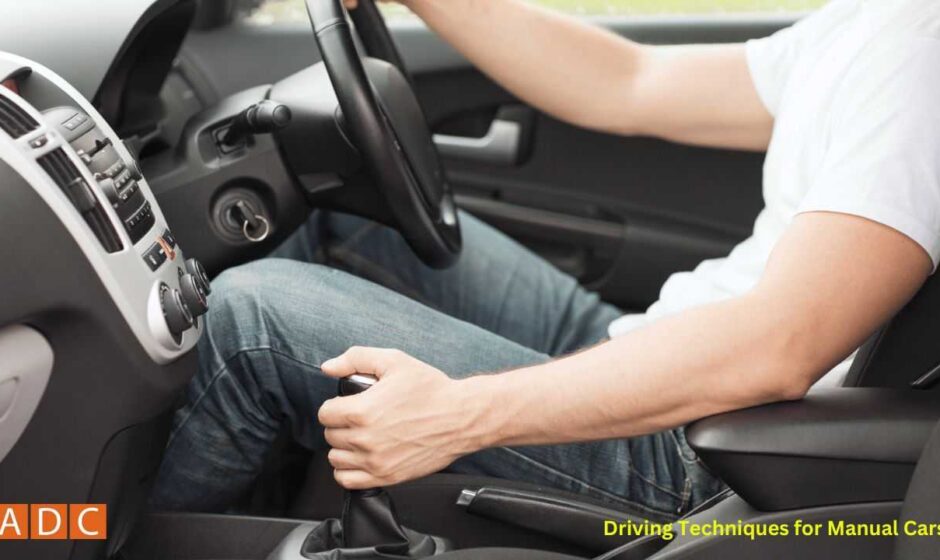Driving a manual car is a skill that many find rewarding and enjoyable. With manual transmissions, you have greater control over the vehicle, and driving becomes a more engaging experience. However, mastering the art of driving a manual car can be daunting for beginners. This article will walk you through the essential driving techniques for manual cars, ensuring a smooth transition from automatic driving to the world of stick shifts.
Understanding the Basics of Manual Cars
Before diving into the techniques, it is important to understand how manual cars work. Unlike automatic cars, manual vehicles require the driver to manually change gears using a gear stick and clutch pedal. Here are the key components you’ll need to familiarize yourself with:
- Clutch Pedal: Located on the far left, the clutch pedal disconnects the engine from the wheels when pressed, allowing you to change gears.
- Gear Stick: Usually found in the center console, the gear stick is used to select the appropriate gear.
- Accelerator Pedal: Found on the far right, the accelerator pedal controls the engine’s speed.
- Brake Pedal: Located in the middle, the brake pedal slows down or stops the car.
- Tachometer: This instrument measures the engine’s RPM (revolutions per minute) and helps you determine the right time to shift gears.
Understanding these components will provide a foundation for learning how to drive a manual car.
Starting the Car
The first step in driving a manual car is starting the engine. Here’s how:
- Depress the Clutch: Fully press the clutch pedal with your left foot.
- Engage Neutral Gear: Ensure that the gear stick is in the neutral position. This is usually indicated by a slight wiggle when moving the stick side to side.
- Start the Engine: Turn the ignition key or push the start button while keeping the clutch pedal pressed.
- Release the Handbrake: If the car is on a flat surface, you can gently release the handbrake. If on a slope, keep it engaged until you’re ready to move.
Moving Forward
Once the car is started, the next step is to move it forward. Follow these steps:
- Press the Clutch Pedal: Keep the clutch pedal fully depressed.
- Select First Gear: Move the gear stick to the first gear position.
- Release the Clutch Slowly: Gradually release the clutch pedal while gently pressing the accelerator pedal with your right foot.
- Feel the Bite Point: The bite point is where the engine starts to engage with the wheels. The car will begin to move forward.
- Fully Release the Clutch: Once the car is moving, fully release the clutch pedal and maintain a steady speed with the accelerator.
It might take some time to get used to finding the bite point. Practice in a safe, open area until you become comfortable with this process.
Shifting Gears
Shifting gears is one of the most crucial aspects of driving a manual car. Here’s a step-by-step guide to help you shift gears smoothly:
- Listen and Watch: Use the sound of the engine and the tachometer to determine when to shift. Generally, you should shift up around 2,500 to 3,000 RPM.
- Depress the Clutch Pedal: Press the clutch pedal fully with your left foot.
- Shift the Gear Stick: Move the gear stick to the desired gear. Follow the shift pattern on the gear stick to ensure correct gear selection.
- Release the Clutch Slowly: Gently release the clutch pedal while simultaneously pressing the accelerator pedal.
- Maintain Speed: Once the gear is engaged, maintain a steady speed by adjusting the pressure on the accelerator pedal.
Remember to practice gear shifts repeatedly to make the process second nature.
Downshifting
Downshifting is necessary when slowing down or preparing to stop. It helps maintain engine efficiency and control. Follow these steps for effective downshifting:
- Slow Down: Gently press the brake pedal to reduce speed.
- Depress the Clutch Pedal: Fully press the clutch pedal with your left foot.
- Shift to a Lower Gear: Move the gear stick to a lower gear that matches your reduced speed.
- Release the Clutch Slowly: As you release the clutch pedal, you may need to give the engine a slight rev with the accelerator pedal to match the engine speed with the road speed.
- Maintain Control: Use the accelerator and brakes as needed to maintain control and adjust your speed.
Practice downshifting in different driving conditions to build confidence.
Hill Starts
Starting on a hill can be challenging for beginners. Here’s a simple technique for successful hill starts:
- Use the Handbrake: Engage the handbrake to prevent the car from rolling backward.
- Depress the Clutch Pedal: Fully press the clutch pedal.
- Select First Gear: Move the gear stick to the first gear position.
- Release the Clutch to the Bite Point: Gently release the clutch pedal until you feel the bite point.
- Release the Handbrake and Accelerate: Release the handbrake while pressing the accelerator pedal to move the car forward.
- Control the Clutch and Accelerator: Use a combination of clutch control and acceleration to maintain a steady speed.
Hill starts require practice, so find a safe location to hone this skill.
Stopping the Car
Stopping a manual car smoothly involves a series of steps:
- Ease off the Accelerator: Gradually release the accelerator pedal to reduce speed.
- Depress the Clutch Pedal: Press the clutch pedal fully with your left foot as you slow down.
- Apply the Brake: Gently press the brake pedal with your right foot to bring the car to a complete stop.
- Shift to Neutral: Move the gear stick to the neutral position once the car is stationary.
- Engage the Handbrake: Use the handbrake to secure the car, especially on inclines.
Stopping smoothly takes practice, so be patient as you develop this skill.
Common Mistakes to Avoid
When learning to drive a manual car, beginners often make some common mistakes. Here are a few to watch out for:
- Riding the Clutch: Avoid keeping the clutch pedal partially engaged while driving, as it can lead to premature wear of the clutch.
- Skipping Gears: Always shift sequentially to maintain engine efficiency and prevent damage.
- Over-Revving: Avoid revving the engine excessively when shifting gears. This can cause unnecessary wear on the engine.
- Stalling: Stalling happens when the clutch is released too quickly without sufficient acceleration. Practice smooth clutch control to avoid stalling.
- Clutch Braking: Do not use the clutch pedal to slow down the car. Instead, rely on the brake pedal for deceleration.
By being aware of these mistakes, you can work on improving your manual driving skills.
Practice Makes Perfect
Learning to drive a manual car is a rewarding journey that requires practice and patience. Here are some tips to help you practice effectively:
- Choose a Safe Location: Practice in an empty parking lot or quiet street to minimize distractions and traffic.
- Start with Basics: Focus on mastering clutch control and smooth gear shifts before moving on to more complex maneuvers.
- Practice Hill Starts: Find a gentle incline to practice hill starts, gradually increasing the difficulty as you gain confidence.
- Seek Guidance: Consider taking a driving lesson from a professional instructor to receive personalized feedback and guidance.
- Stay Calm: Don’t get discouraged by mistakes or stalls. Stay calm and keep practicing to improve your skills.
Remember, becoming proficient in driving a manual car takes time, so be patient with yourself.
Conclusion
Driving a manual car is a valuable skill that offers greater control and a more engaging driving experience. By understanding the basics and practicing the essential techniques outlined in this article, you’ll become a confident and skilled manual driver. Embrace the challenge, practice regularly, and enjoy the satisfaction of mastering the art of driving.




